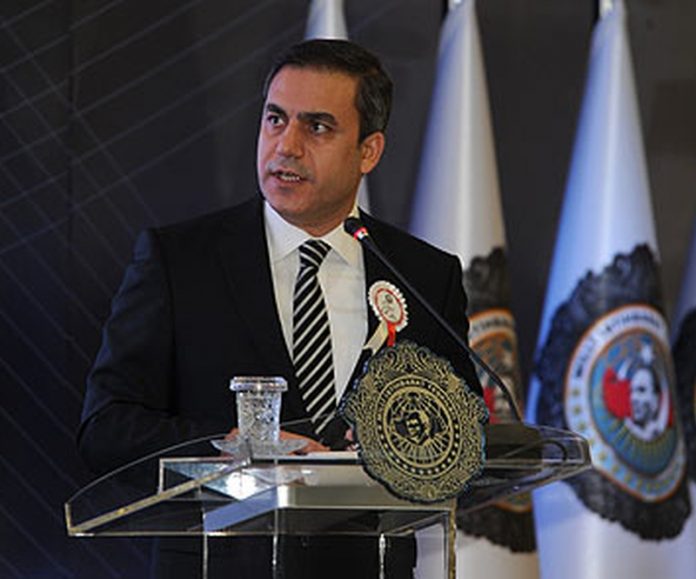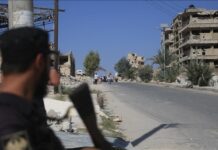Until 2012 I had remained convinced that Gülen’s network was ultimately working with the AKP to reform Turkish state institutions. There had been rumors of tension between the AKP and Gülen over issues such as the Mavi Marmara incident, but the anarchical situation in and the unprofessional behavior of the Turkish press made it difficult to believe such rumors. Accusations of wrongdoing in the Ergenekon and Balyoz cases were countered by everyone’s knowledge of the Turkish state and military’s past actions; the 27 April 2007 “e-ultimatum” from the Turkish General Staff indicated that plotting for a new coup was a reality. Concurrently, the Hrant Dink case continued to be stymied in the courts even though Turkish society as whole was aware that those responsible for the act were lodged deep in state institutions, and were therefore being protected. The “usual suspect” for abhorrent acts of violence such as the February 2006 Andrea Santoro murder, the January 2007 Hrant Dink assassination, and the April 2007 Malatya missionary murders was the Turkish “deep state,” which had plagued Turkish society throughout the previous several decades (1).
Retrospectively, we can see that it was no coincidence that the Ergenekon case began in 2007, just at the moment that the military began to lose its ability to intervene in Turkish politics. As the traditional Kemalist state elites step by step lost their ability to determine the course of political events, Gülen’s adherents solidified their influence. We now know that Gülen’s prosecutors were using their powers to remove potential opponents from and to advance their own kind in state institutions. The same prosecutors and policemen also falsified evidence and trumped up charges in order to make their court cases more robust, and to arrest others that they wanted to remove from positions of influence. That was the source of all accusations of wrongdoing in relation to those cases. What was still not expected at the time was for Gülen’s prosecutors and judges to use their increasing strength for non-democratic, even violent purposes.
In the nearly five years leading from Hrant Dink’s early 2007 assassination (2), as well as the initial investigations leading to the Ergenekon case, to early 2012, Gülenist prosecutors had great freedom of action in arresting and jailing those they identified as impediments to Gülen’s scheme. Then in February 2012, Hakan Fidan, the head of the Turkish intelligence agency MİT (Milli İstihbarat Teşkilatı), was subpoenaed by İstanbul prosecutors. Furthermore, he was subpoenaed on a day when his immediate superior, PM Erdoğan, was in hospital and due to undergo a major operation. Worse yet, he was likely to be charged with conducting illegal talks (in Oslo) with the PKK, on the grounds that this was tantamount to treason. The draft notes of the top-secret Oslo talks had somehow been leaked to the press, again by key players in the Gülenist network, and then Gülenist prosecutors had jumped on them in preparing to arrest the Turkish intelligence chief, their real objective being to put the PM in an impossibly embarrassing position, since it was Erdoğan who had authorized the talks. Imagine what might have happened in the U.S. if some American president had authorized the CIA director to conduct comparable negotiations, and then some provincial district attorney had come out of nowhere to subpoena the head of the CIA on grounds of treason!
Fortunately, in PM Erdoğan’s absence it was President Abdullah Gül who promptly intervened and advised Hakan Fidan not to go to the prosecutors’ office; subsequently, Erdoğan came out of hospital and some emergency legislation was introduced to make such surprise attacks impossible in the future. But at that time, just what was occurring was not clear, and the rampant gossiping in the Turkish press made understanding it extremely difficult. The only thing the general public knew was that prosecutors had, rather incredibly, tried to arrest the head of Turkish intelligence, a person who was known to be close to the PM. That fact by itself sparked general suspicion in Turkish society, which is why it is still remembered so vividly. It was only in later years that details of the February 2012 incident slowly emerged. It came to be confirmed that Gülen’s prosecutors — the same prosecutors who had launched the Ergenekon and Balyoz cases (3) — had wanted to arrest Fidan by way of striking at Erdoğan, his policies, and figures close to him. A number of rumors, sometimes ranging into conspiracy theories, subsequently emerged about the larger designs of Gülen’s prosecutors, but the overall intent was apparently to inflict as much damage as possible on then-PM Erdoğan, and possibly even force him to resign, effectively removing him from politics.
As far as I know, the only journalist who correctly understood what happened at the time was Sabah’s Ferhat Ünlü. Ünlü seems to have been the first journalist to use the term “a parallel state,” and he described the Fidan crisis as the beginning of “Armageddon,” the final battle between what we later understood to be Gülen’s organization and Turkey’s democratically-elected civilian political leadership (4). Later events proved Ünlü’s assessment to have been correct and accurate.
Still, the rest of 2012 passed without a major political incident. True, the opposition press continued to work on anti-AKP, anti-Erdoğan themes, but that was par for the course. In Turkish society, things seemed to be going well. That’s why the events of May 2013 were so shocking, though they too would turn out to be only the first in a series of massive political tremors that culminated in the failed 15 July 2016 coup attempt.
NOTES
(1) http://bianet.org/bianet/azinliklar/135926-rahip-santoro-cinayeti-ndeki-sessizlik.
(2) Over the past eight months the impediments to progress in the Hrant Dink case seem to have evaporated, and a number of important developments have occurred. It now appears that Gülenist elements were involved in the assassination, and this was why the case stagnated for such a long time. We have now learned that the Turkish police and gendarmerie were fully aware of the plot to kill Dink, that they knew far in advance who would act as the triggerman, that they did not take steps to prevent the murder, and that they then cooperated in trying to stifle the investigation following the murder. A number of recent key arrests have also been made: https://www.serbestiyet.com/Gundem/dink-cinayetinin-kilit-ismi-mdye-cunta-gozaltisi-704723; https://www.serbestiyet.com/Gundem/dink-cinayetini-onceden-bilen-jandarma-binbasi-gozaltinda-707630; https://www.serbestiyet.com/Gundem/dink-cinayeti-sorusturmasinda-tutuklama-karari-728858; https://serbestiyet.com/Gundem/avcidan-dink-davasina-mektup-710554.
(3) The most infamous of all prosecutors tied these cases was and is Zekeriya Öz, who is now on the lam and rumored to be in one of several European countries. The list of investigations that Zekeriya Öz was involved with is deeply disturbing: the November 2003 İstanbul synagogue, HSBC, and British consulate bombings; Ergenekon; Balyoz; the 17 December 2013 corruption cases: http://www.aljazeera.com.tr/portre/portre-zekeriya-oz.
(4) http://www.sabah.com.tr/pazar/2012/02/12/devlet-paralel-devlete-karsi. In the article, Ünlü refers to the arrests of Hanefi Avcı, Nedim Şener, and Ahmet Şık as related to the books that they wrote concerning Gülen’s organization. I did not know about Ünlü’s column when it was published; only last year did I become aware of it through Yıldıray Oğur’s articles. Those who know Turkish will also notice a sensitive aspect of the topic: Ünlü refers to Israel several times, noting that the Israeli paper Haaretz had published an article (http://www.haaretz.com/israel-worried-by-new-turkey-intelligence-chief-s-defense-of-iran-1.294568) claiming that Mossad was unhappy when Fidan was made head of the MİT. In the same article, Ünlü also claims that Israeli intelligence had something to do with the Uludere (Roboski) massacre in December 2011, in which several dozen Kurdish villagers were bombed by Turkish security forces in the mountains on the Turkish-Iraqi border after being “mistaken” for PKK militants. Suspicion concerning the Uludere incident now rests on Gülen’s organization, whose members may have had a role in purposefully misdirecting or misinforming the Turkish security forces. The probable aim of the Uludere massacre was to create an internationally embarrassing incident and provoke social unrest by casting the AKP government as returning to the 1990’s genocidal outlook on the Kurdish people.













